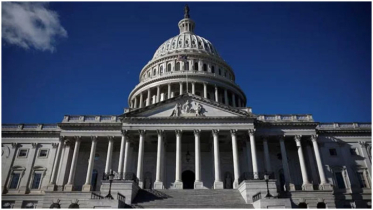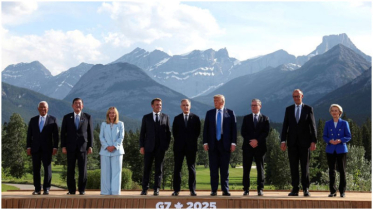Jittery markets await Fed as Mideast conflict rages on

Global markets traded cautiously on Wednesday as escalating Middle East hostilities and uncertainty ahead of the Federal Reserve's monetary policy decision later in the day prompted investors to hold back on fresh stock market and currency bets.
As traders grappled with how Israel's continued air strikes on Iran, now into their sixth day, would affect the global economy and financial markets, European stock indices and international oil prices wavered, lacking much direction.
A broad gauge of European equities traded flat, the UK's FTSE 100 edged 0.2% higher and Germany's DAX share index rose by the same amount.
Brent crude oil fell 0.8% to $75.92 a barrel , but remained set for a 1.6% weekly rise.
Thousands of Tehran residents have fled from Israel's attacks targeting Iranian leader Ayatollah Ali Khamenei's inner circle, local media said, as Israel reported Iranian counter-attacks and the U.S. deployed more fighter jets to the region.
Israel's largest ever air strike on Iran, launched after it said it had concluded Tehran was on the verge of developing nuclear weapons, has stirred fears of supply disruptions in the Strait of Hormuz, a key conduit for seaborne oil. The sharp jump in oil prices also poses a fresh global inflation threat on top of U.S. tariffs.
Investors have grown increasingly nervous over the possibility of more direct U.S. military involvement since President Donald Trump this week called for Iran's unconditional surrender and warned Washington's patience was wearing thin.
"Clearly the Middle East issues have not been solved, and comments by President Trump just mean that things could get more dangerous in that part of the world," said Joseph Capurso, head of international and sustainable economics at Commonwealth Bank of Australia (CBA).
"The markets are trying to figure out that risk of a big U.S. military intervention. It's hard to say exactly what the market is thinking, but judging by the oil price and currencies, they're certainly pricing in at least some risk that something goes very bad there."
U.S. equity futures were equally directionless, with contracts tracking the S&P 500 and the tech-heavy Nasdaq 100 both rising about 0.2% after the cash session on Wall Street ended in the red on Tuesday.
In currencies, the dollar held to most of its recent gains against peers, due to the U.S. being an energy exporter, while prospective oil price spikes could impact consumer spending and inflation in importer regions like the euro zone and Japan.
The struggled to recover from its 0.7% fall on Tuesday and last bought $1.1535.
Sterling edged 0.2% higher to $1.3458, having slid 1.1% in the previous session and the yen inched 0.2% higher to 1.4498 per dollar .
"The war has demonstrated that the U.S. dollar still retains a bit of haven status in certain situations, such as when the war is seen to raise the risk of disrupting global oil supply," Macquarie Group global FX and rates strategist Thierry Wizman said.
FED 'DOT PLOT'
The conflict in the Middle East, combined with prolonged uncertainty over Trump's tariffs and signs of fragility in the U.S. economy, make for a challenging backdrop ahead of the Federal Reserve's policy decision later on Wednesday.
U.S. retail sales fell by a larger-than-expected 0.9% in May, data showed on Tuesday, the biggest drop in four months.
Expectations are for the Fed to stand pat on rates, though the focus will also be on the central bank's updated projections for the economy and the benchmark interest rate, known as the dot plot.
"Markets are going to be closely watching the Fed’s quarterly dot plot for clues on how and when the central bank will resume its cutting cycle," Insight Investment co-head of global rates Harvey Bradley said.
"As tensions in the Middle East have the potential to threaten the inflation picture further, it cannot be ruled out that projections adjust to reflect just one rate cut this year,” he added.
But this outlook was not certain, he added, because the U.S. labour market had started to falter.
U.S. Treasury yields were steady after falling on Tuesday, when investors poured into safe-haven government bonds in response to the latest developments in Israel and Iran. Treasury yields, which set the tone for debt interest costs globally, fall when prices of the securities rise.
The benchmark 10-year U.S. yield was last about 1 basis point (bp) higher at 4.4027%, having fallen roughly 6 basis points in the prior session. The two-year yield , which is more sensitive to changes in expectations for Fed interest rates, was steady at 3.9586%.
Elsewhere, spot gold traded flat at $3,386 an ounce.
.png)




